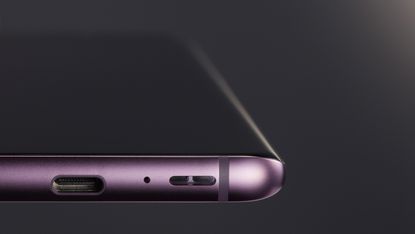Some near-invisible design changes have been made to the Samsung S9 that should result in it being less likely to break if it gets dropped. That should come as a relief to the slippery fingered.
SamMobile has had a dig into the Galaxy S9's specs. It's compared them with those of the Galaxy S8 and outlined the subtle design changes that should give the S9 a better chance of surviving a fall.
Here are three small but key changes which make the S9 tougher than the S8, making it less likely to smash if it takes a tumble.
1. The Galaxy S9 has thicker front glass
The glass on the front of the Samsung Galaxy S9 is 20% thicker than the glass on the S8, which should make it more durable.
If you want the techie details, the thickness value of the glass on the S9 is 0.6T, while the S8 has glass with a thickness value of 0.5T, apparently.
2. The Galaxy S9 has stronger sides
The rim around the edge of the Samsung Galaxy S9 has been created from a stronger form of aluminium than the sides of the S8 – AL 7003 aluminium on the S9 versus AL 6013 aluminium on the S8.
This change means that the chassis is less likely to deform if the phone is dropped, helping to protect that all-important glass from shattering.
3. The Galaxy S9 has thicker sides
That aluminium rim isn't just stronger; it's thicker, too, by 0.2 mm. This minuscule increase in thickness, combined with the step-up in strength, means that 20% less shock is transferred from the metal to the glass when the phone is dropped, according to SamMobile.
These design changes make the Galaxy S9 a tiny bit thicker than the S8 – 0.5mm thicker to be precise. If you can tell the difference you should enter a 'guess how thick this phone is' competition.
If you're really worried about dropping your shiny new S9, though, you might want to invest in a case.



